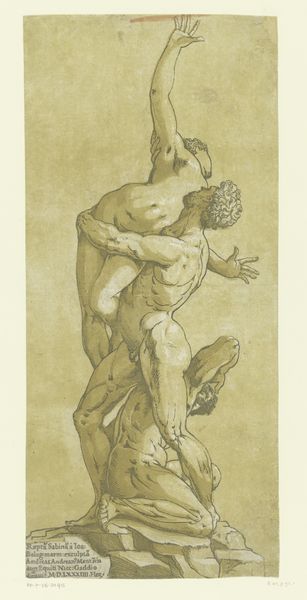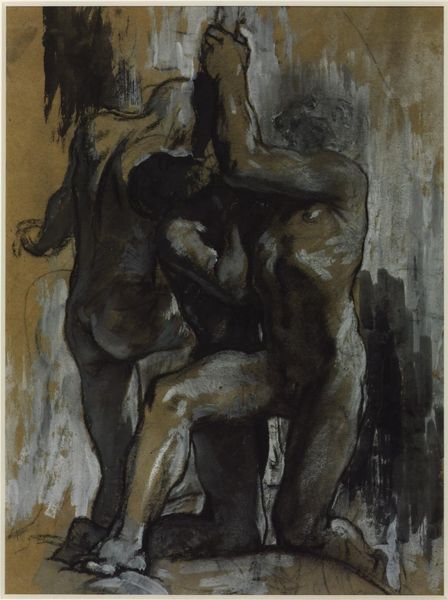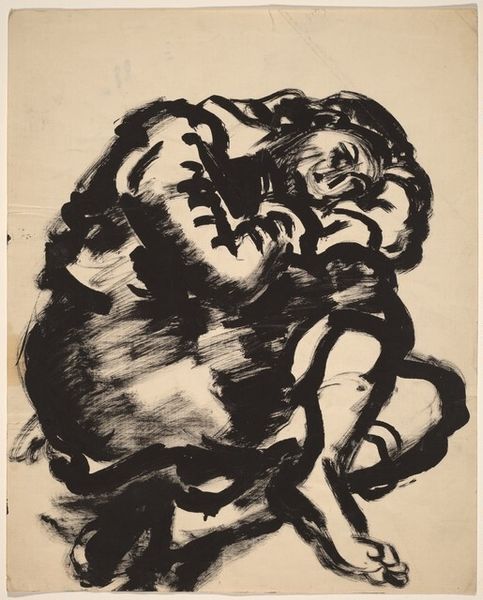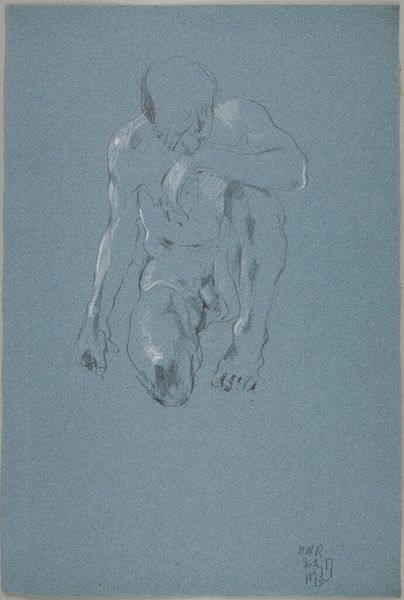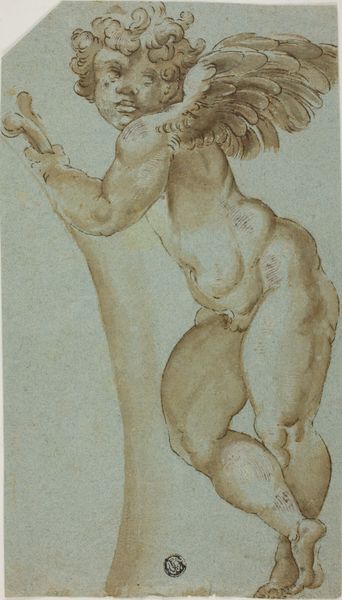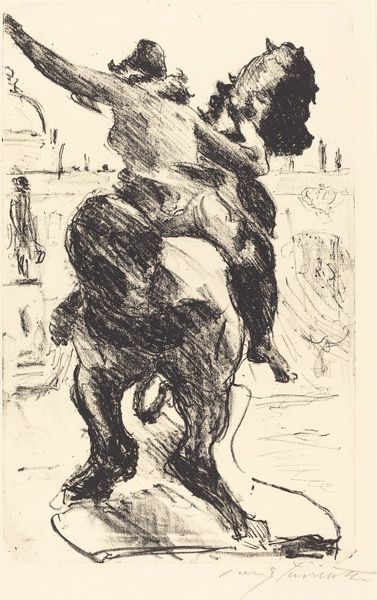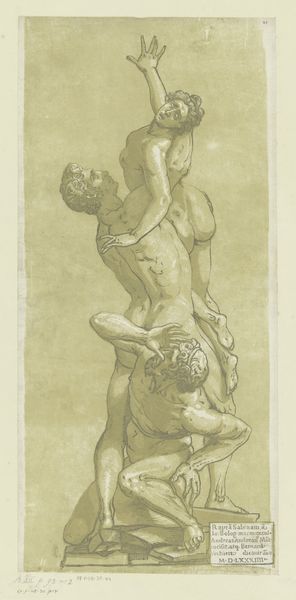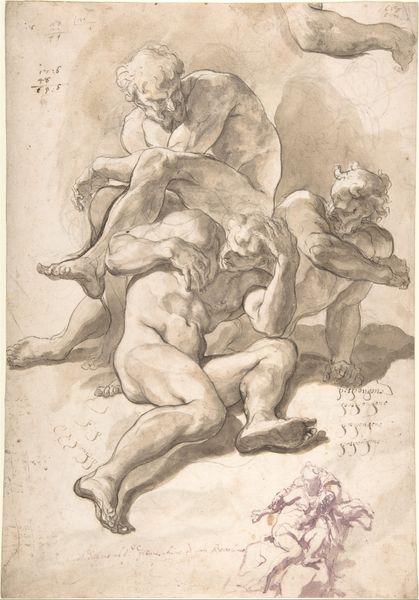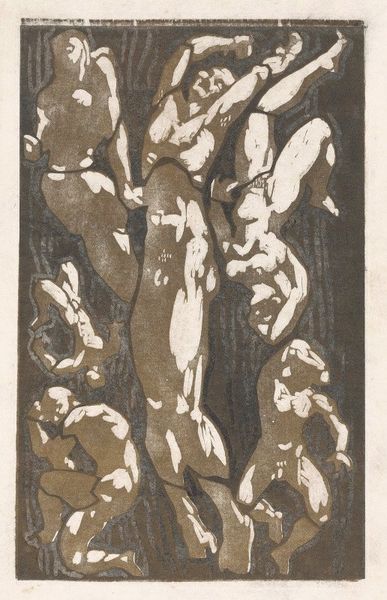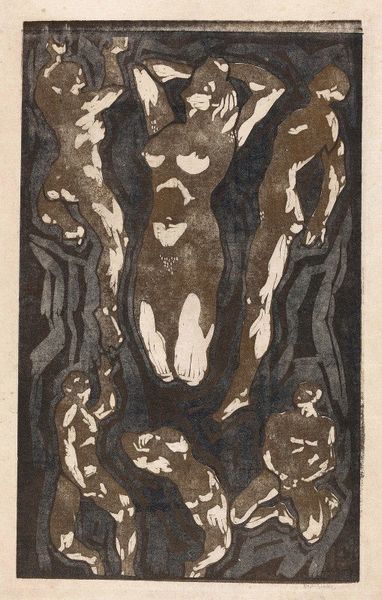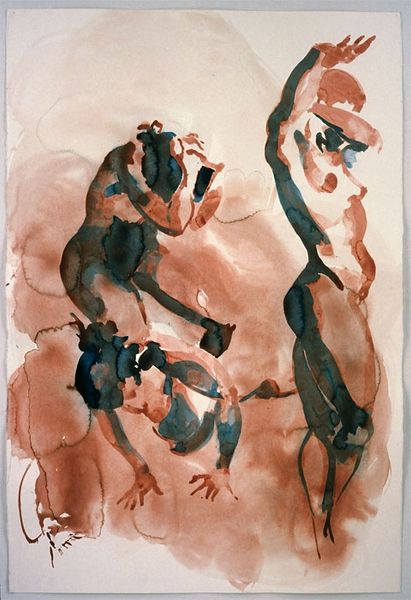
Dimensions: support: 308 x 241 mm
Copyright: © The estate of Jacques Lipchitz, courtesy, Marlborough Gallery, New York | CC-BY-NC-ND 4.0 DEED, Photo: Tate
Editor: This is Jacques Lipchitz’s “Study for ‘Prometheus’,” held at the Tate. It's a powerful drawing; the figures seem locked in a brutal struggle. What do you make of it? Curator: The enduring appeal of the Prometheus myth lies in its symbolism – rebellion, sacrifice, the gift of knowledge, all potent images across cultures. Look at how Lipchitz captures this struggle; what symbols resonate most strongly here? Editor: I guess the contorted bodies speak to sacrifice, but I hadn’t thought of the gift of knowledge. Curator: Exactly. Consider how Lipchitz uses light and shadow. Does it emphasize the power of one figure over another, or does it hint at a more complex, intertwined fate? Editor: I see what you mean. It feels like a cycle of power. Thanks; that really clarifies things for me. Curator: Indeed, myth allows us to process recurring human experiences. I'm glad it resonated.
Comments
tate 6 months ago
⋮
http://www.tate.org.uk/art/artworks/lipchitz-study-for-prometheus-t01755
Join the conversation
Join millions of artists and users on Artera today and experience the ultimate creative platform.
tate 6 months ago
⋮
Prometheus strangles the vulture sent by the gods to punish him for bringing fire to mankind. For Lipchitz, this symbolised democratic freedom at a time of totalitarianism. The sketchy handling of this watercolour anticipates the bold carving of the sculpture of Prometheus that Lipchitz created for the 1937 International Exhibition. The nine-metre-high plaster monument was branded 'Bolshevik' by a right-wing newspaper campaign and it was destroyed in 1938. Gallery label, August 2004
